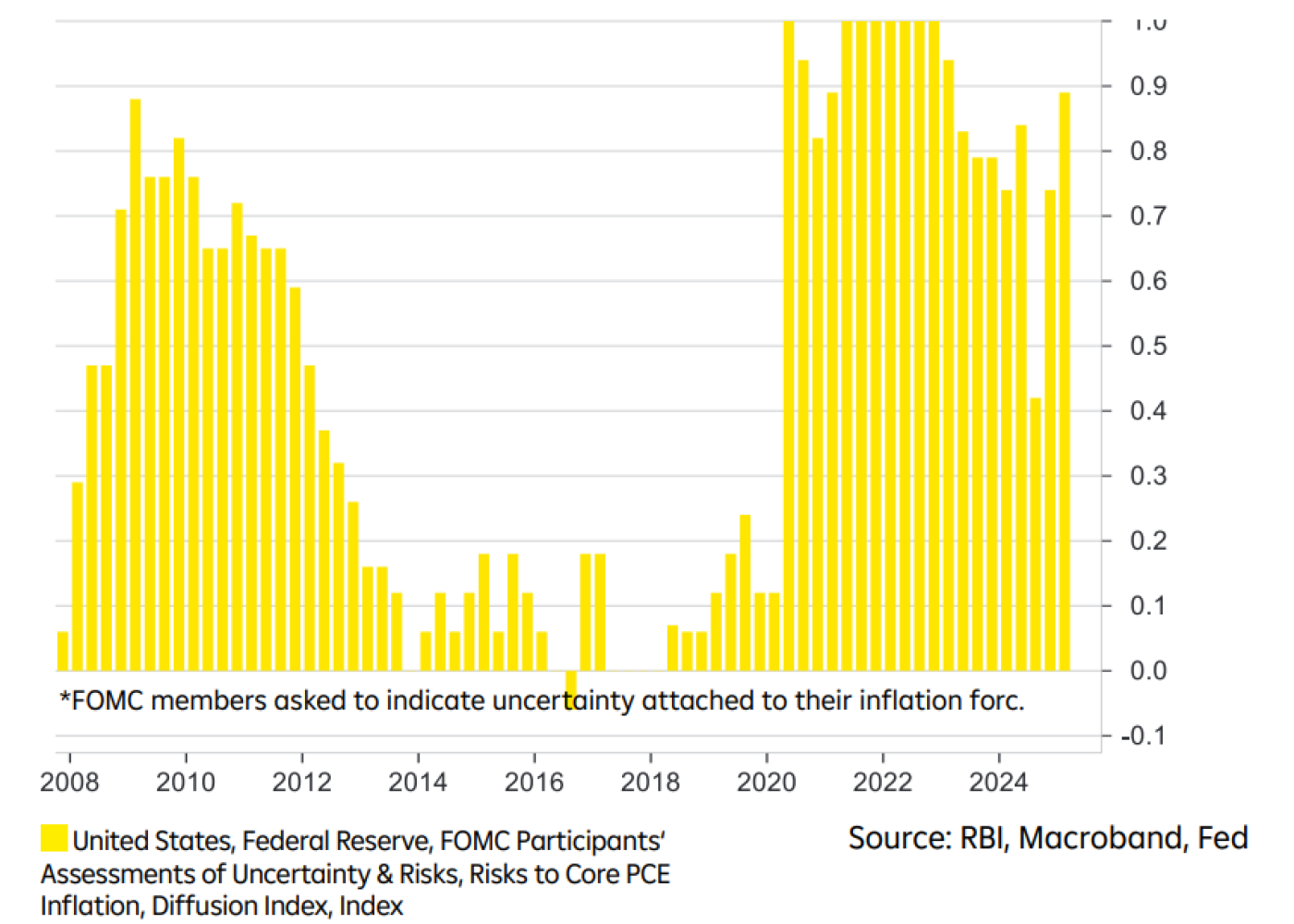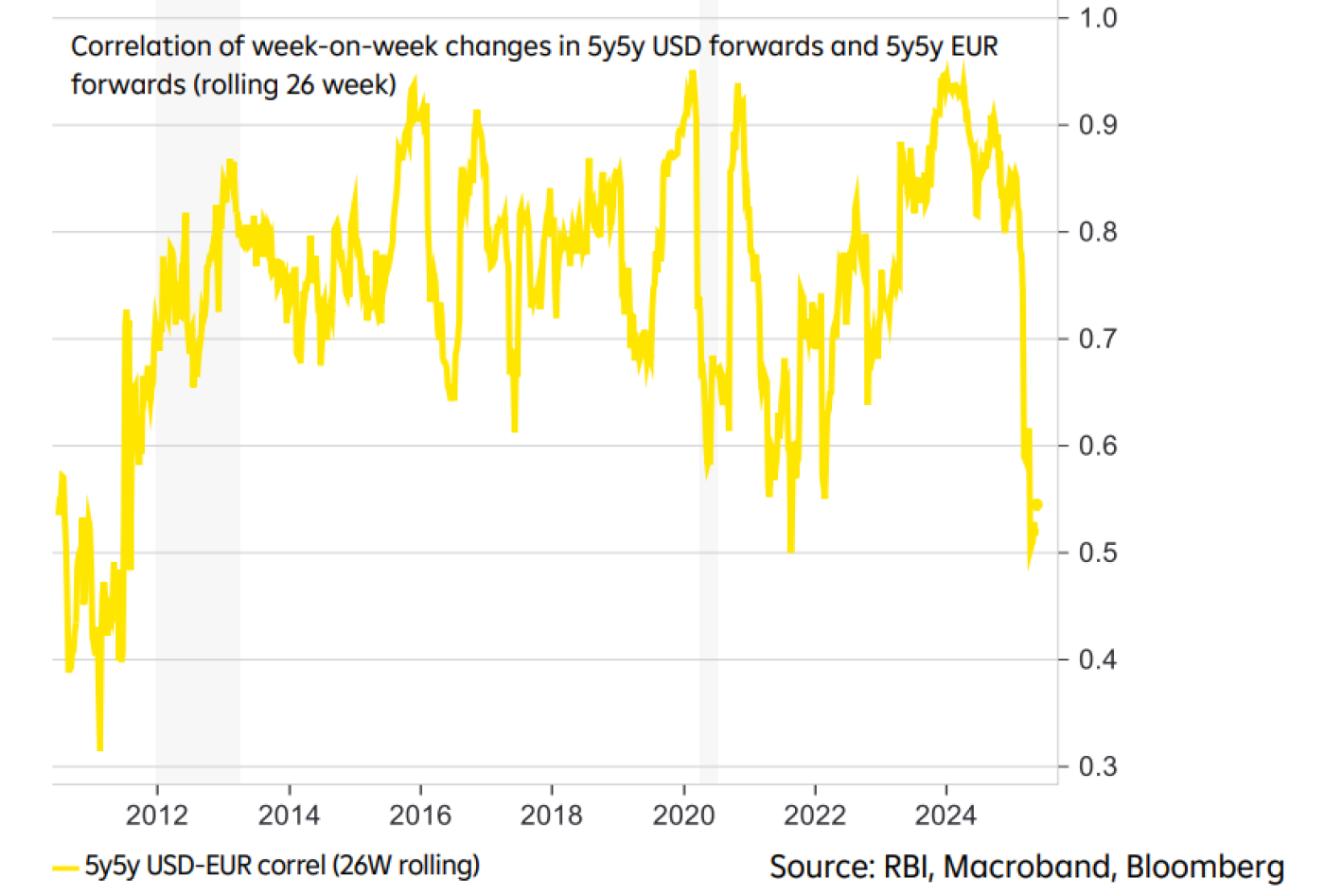
Martin Blum
Head of Desk Strategy and Capital Markets Development, RBI Group Capital Markets

The election of Donald Trump for a second presidential term, 5 November 2024 is one of the most consequential elections for the world in more than 70 years. It arguably spells a definitive change to the post-1945 rules-based international order along with an abrupt switch in the way that the US government defines its national interest. From a financial markets perspective this pushes “isolationism” and “protectionism” significantly up the list of drivers.
This has 3 significant implications for risk mitigation:

3. There is an increased risk of extreme outcomes: Perhaps the most important change for risk management is the increased risk of extreme market outcomes. This doesn’t mean that extreme outcomes are the most likely scenario but could mean that tail risks are increasing. A key issue in market focus is whether the US Federal Reserve will face increased pressure to adopt a looser policy than what the inflation outlook realistically permits. This, alongside concern that a US trade war will broaden to one involving capital flows, points to increasing tail risks of extreme USD and longer maturity US Treasury bond yield moves.
Less predictable, more volatile markets, with increased scope for extreme outcomes, unsurprisingly have significant implications for risk management:

5. Fundamental differentiation in the Emerging Markets and CEE Foreign Exchange: In an evolving global order, it is also likely that markets will increasingly differentiate between countries based on: (i) the impact of US policy changes (e.g. on their exports or US political relations). (ii) the economic and policy sheet flexibility countries have to respond to any economic shock from US policy -> This has particular relevance for Emerging Markets and CEE exchange rates, where countries with larger economic exposure to the US but less domestic policy space are more vulnerable.
The bottom line: Significant changes in the US economic and security policy orientation both has significant short and long-term implications for global markets and for risk mitigation. To conclude with a 17th April quote from ECB president Lagarde; “We are not in a shock free world, that’s for sure.”
Martin Blum

Head of Desk Strategy and Capital Markets Development, RBI Group Capital Markets

Navigate financial market risks confidently with our expert insights report - filled with proven strategies, risk management techniques, expert insights, and best practices.
IMPORTANT NOTICES
This document is a marketing communication.
The country specific amendments at the end of these notices are explicitly drawn to the attention of the recipient of this document. To the extent the country specific amendments contradict the other content of these notices, the country specific amendments will prevail with respect to the jurisdiction to which the respective country specific amendments relate.
This document has been prepared by the following staff employed at Group Capital Markets, a division of Raiffeisen Bank International AG:
Martin Blum, Head of Desk Strategy
Raiffeisen Bank International AG ("RBI"), an Austrian credit institution supervised by the Austrian Financial Markets Authority (Finanzmarktaufsicht – FMA) and the Austrian Central Bank (Oesterreichischen Nationalbank – OeNB), is responsible for this document. RBI is also supervised by the European Central Bank ("ECB") within the framework of the Single Supervisory Mechanism ("SSM"), comprising ECB and the competent national authorities as per Council Regulation (EU) No 1024/2013 of 15 October 2013 ("SSM Regulation").
This document does not constitute a financial analysis and has not been prepared by financial analysts in observance of the legal rules on the enhancement of the independence of financial analyses and is not subject to any prohibition on dealing ahead of the dissemination of investment research.
This document is provided solely for informational purposes and does not constitute an offer to subscribe for, buy or sell any of the financial instruments mentioned therein, nor an invitation to make such offer or a promotion and/or placement of those financial instruments or any (ancillary) investment services. This document does not constitute investment advice, is not intended to provide a sufficient basis on which to make an investment decision and is in particular not capable of replacing investment advice relevant to a given financial instrument and tailored to the specific circumstances and requirements, and accounting for the relevant expertise and experience, of an individual investor.
The observations and recommendations contained herein reflect those of the respective author hereof as at the date hereof and may become inaccurate thereafter.
This document may include references to financial instruments in relation to which RBI may act as market maker, and in which it is likely as principal to have a long or short position at any time, including possibly a position that was accumulated on the basis of the information contained herein prior to its dissemination. RBI may engage in transactions, for its own account or with customers, in a manner inconsistent with the views taken in this document. Others within RBI, including strategists, sales staff and other analysts, may take views that are inconsistent with those taken in this document.
Any figures on performance indicators relate to the past only. Past performance is not necessarily a reliable indication of future results or, in particular, the future performance of financial instruments. This is particularly true for financial instruments that have been offered for trade for of period of less than 12 months in view of such specifically short reference period.
The performance of financial instruments can be impaired by commissions, fees, taxes and other expenses that may be charged depending on circumstances relative to a given investment or investor.
Forecasts are based merely on estimates and assumptions. Actual future performance may deviate from such forecasts. Forecasts are not a reliable source of predicting future results or the future performance of financial instruments.
Information contained herein has been obtained from public sources believed to be reliable by RBI. However, RBI does not make any representation or warranty as to the accuracy or completeness of such information and, to the extent legally permitted, declines any kind of liability for losses purportedly suffered from the use of this document.
This document has been prepared for information purposes and exclusively for the purposes of distribution to professional clients as defined in Article 4(1)(10) of Directive 2014/65/EU (including, for the avoidance of doubt, eligible counterparties as defined in Article 30(2) of Directive 2014/65/EU and transposing national legislations) of RBI. THIS DOCUMENT IS NOT INTENDED TO BE PROVIDED TO RETAIL CLIENTS AS DEFINED IN ARTICLE 4(1)(11) OF DIRECTIVE 2014/65/EU (I.E. ALL CLIENTS OTHER THAN PROFESSIONAL CLIENTS, AS DEFINED ABOVE) OR, IF DIFFERENT, CONSUMERS AS DEFINED BY THE RELEVANT APPLICABLE DOMESTIC STATUTORY PROVISIONS OR, IF DIFFERENT, ANY OTHER PERSON NOT ELIGIBLE FOR RECEIPT AS STATED ABOVE AND MUST IN CONSEQUENCE NOT BE FORWARDED TO RETAIL CLIENTS OR, IF DIFFERENT, CONSUMERS OR, IF DIFFERENT, ANY OTHER PERSON NOT ELIGIBLE FOR RECEIPT AS STATED ABOVE WHETHER IN WHOLE OR IN PART. The recipient hereof shall treat this document and the information contained herein as confidential and may not, whether in whole or in part, disclose, distribute or reproduce this document or make use of it for any other purposes.
Additional detailed legal and risk information can be accessed here: https://www.rbinternational.com/en/home/legal/important-notices-implications-from-a-changed-world-for-risk-mitigation.html